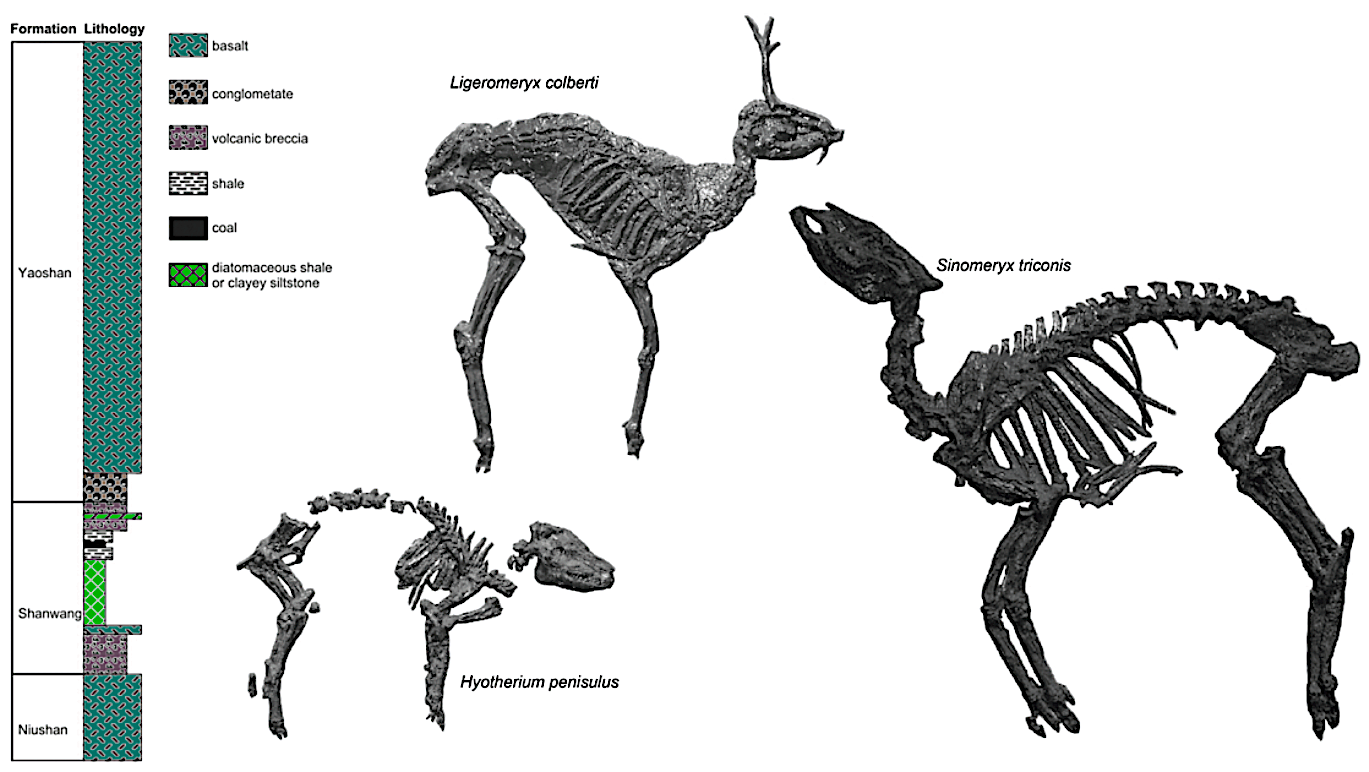Shanwang Fm
Type Locality and Naming
The type section is located 1 km north of Shangwang Village, and 1 km west of Xiejiahe Village, Shanglin Township, Linqu County, Shandong Province. It is situated 16 km northwest of the Linqu County. Geographical coordinates: 36°32′36”N. 118°43′22″E (GPS). Named by C.C. Young (Yang Zhongjian) in 1936.
Lithology and Thickness
The Shanwang formation is divided into three members: Lower member is composed of grayish yellow or grayish green, basaltic breccia, agglomerate and pyroclastic rocks; Middle member consists of grayish green, grayish yellow, grayish black or grayish white mudstone and shale, with the upper part intercalated with oil shale and the lower part consisting mainly of diatomaceous shale, containing phosphatic nodules and abundant animal and plant fossils; Upper member is composed of steel-gray, compact basanite and purplish gray, vesicular, alkali olivine basalt with muddy shale and carbonaceous shale. The thickness is 78–110 m.
Relationships and Distribution
Lower contact
The Shanwang formation is unconformablu sandwiched between two basalt beds, the underlying one is the Niushan Fm.
Upper contact
Regional extent
GeoJSON
Fossils
Insectivora: Lusorex taishanensis; Chiroptera: Shanwangia unexpectuta; Rodentia: Ansomys shanwangensis, Tamiops asiaticus, Sciurus lii, Oriensciurus linquensis, Plesiosciurus aff. sinensis, Diatomys shantungensis; Carnivora: Amphicyon confucianus, Ysengrinia sp., Ballusia orientalis, Phoberocyon youngi; Proboscidea: Gomphotherium cf. annectens; P erissodactyla: Anisodon sp., Plesiaceratherium gracile, Diaceratherium sp., Plesiotapirus yagii; Artiodactyla: Sinapriculus linquensis, Hyotherium shanwangense, Bunolistriodon? penisulus, Sinomeryx tricornis, Ligeromeryx colberti, Heterocemas simpsoni
[Figure: Stratigraphic column of the Shanwang Section, showing the superposition of Niushan Fm, Shanwang Fm, and Yaoshan Fm, the fossils are typical members of the Shanwang assemblage]
Age
Depositional setting
The Shanwang Formation was interpreted as the deposits of volcanic crater lake basin facies. It is generally considered that the occurrence of large quantities of diatoms and phosphatic nodules in the middle member is related to the enclosed state of the water basin, and that the intercalation of several basalt beds evidently suggests relatively repeated magmatic activities nearby during deposition of the formation.
Additional Information
